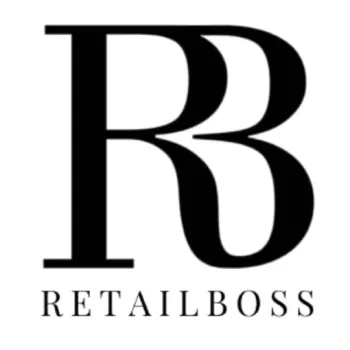If you’re considering opening a retail store, you’re embarking on an exciting entrepreneurial journey. Despite the challenges posed by the ever-evolving retail landscape, there are numerous opportunities for success. This comprehensive guide will give you the essential steps and strategies to open and run a thriving retail business. If you follow these 10 retail tips, you can successfully navigate through the intricacies of the retail industry and position your store for long-term success.
- 1. Researching Your Market
- 2. Choosing the Right Legal Structure
- 3. Crafting a Solid Business Plan
- 4. Securing Funding for Your Retail Store
- 5. Obtaining Licensing and Permits
- 6. Finding the Perfect Location
- 7. Building an Online Presence
- 8. Building Relationships with Suppliers
- 9. Hiring and Training Staff
- 10. Implementing a Robust Point-of-Sale System
- 11. Developing an Effective Marketing Strategy
- 12. Planning a Grand Opening
- Conclusion
1. Researching Your Market
Conducting thorough market research is crucial before diving headfirst into the retail industry. Understanding your target market and identifying your unique selling points can differentiate your business from competitors. Begin by asking yourself the following questions:
-
What is the purpose of opening a retail store, and how does it address a need or demand in the market?
-
What are your business’s core values, and how will they resonate with your target customers?
-
Who are your ideal customers, and what sets your business apart from competitors?
-
How will you market your store and reach your target audience?
You’ll gain valuable insights that will shape your business’s vision, product offerings, and marketing strategies by answering these questions.
2. Choosing the Right Legal Structure
Selecting the appropriate legal structure for your retail store is a vital decision that affects various aspects of your business, including taxes, liability, and fundraising options. Here are some common options to consider:
-
Sole Proprietorship: This structure is the simplest and requires no formal paperwork. However, it also means you are personally liable for any business debts.
-
Partnership: A partnership allows multiple owners to share the responsibilities and profits of the business. General partnerships involve shared liability, while limited partnerships offer more flexibility.
-
Corporation: Corporations are separate legal entities that provide personal liability protection but require more extensive record-keeping and tax requirements.
-
Limited Liability Company (LLC): An LLC combines a corporation’s and a partnership’s benefits, providing personal liability protection while maintaining simpler tax requirements.
Consult a legal professional to determine your retail store’s most suitable legal structure based on your specific needs and goals.
3. Crafting a Solid Business Plan
A well-crafted business plan serves as a roadmap for your retail store, outlining your objectives and strategies for achieving them. While the level of detail may vary based on your business structure, consider including the following elements:
-
Products and Services: Describe the types of products or services your store will offer and provide information about your suppliers and vendors.
-
Target Market: Clearly define your target customers and identify what sets your business apart from competitors.
-
Marketing Strategies: Outline your marketing plans, including social media campaigns, online advertising, and collaborations with other businesses.
-
Staffing Requirements: Determine the number of employees needed and describe your hiring and training processes.
-
Financial Forecast: Project your revenue and expenses, estimating your startup costs and ongoing operational expenses.
A well-defined business plan helps you stay on track and is a valuable tool when seeking funding or attracting potential investors.
4. Securing Funding for Your Retail Store
Opening a retail store requires adequate funding to cover startup costs, inventory purchases, rent, and other essential expenses. Consider the following funding options:
-
Bank Loans: Approach banks and financial institutions to inquire about business loans. Ensure that your business plan is comprehensive and demonstrates your ability to repay the loan.
-
Government Programs: Research government-sponsored loans or grants that support small businesses. These programs often offer more favorable terms and reduced risks.
-
Angel Investors: Seek out high-net-worth individuals who may be interested in investing in your retail store in exchange for partial ownership.
-
Friends and Family: Approach trusted friends and family members who may be willing to invest in your business. Be sure to establish clear contracts to protect personal relationships.
Carefully assess your funding needs and explore various options to determine the best fit for your retail store.
5. Obtaining Licensing and Permits
Complying with legal requirements is crucial for operating a retail store. Each jurisdiction has its own set of permits and licenses, so it’s essential to research and obtain the necessary documentation. Some common licenses and permits include:
-
Employer Identification Number (EIN): In the United States, an EIN is required to identify your business for tax purposes.
-
State and Local Licenses: Research and obtain the appropriate licenses from your state and local government bodies.
-
Resale Certificate: If your store involves reselling products, you may need a resale certificate to exempt you from paying sales tax to your suppliers.
-
Certificate of Occupancy (CO): For brick-and-mortar stores, a CO ensures your building complies with safety regulations and is suitable for customers and employees.
Consult local authorities and government resources to understand the specific licenses and permits required for your retail store.
6. Finding the Perfect Location
Choosing the right location for your retail store is crucial for attracting customers and maximizing sales. Consider the following factors when selecting a location:
-
Target Demographics: Identify the demographics of your target customers and choose a location that aligns with their preferences and needs.
-
Foot Traffic: Look for areas with high foot traffic, such as shopping malls, busy streets, or popular neighborhoods, to increase visibility and exposure.
-
Competitor Analysis: Assess the presence of competing stores in the area and determine if there is room for your business to thrive.
-
Space Requirements: Determine the amount of space you need for product display, storage, and office operations.
-
Rent and Lease Terms: Consider your budget and negotiate favorable lease terms that align with your financial projections.
Finding the perfect location requires careful consideration of these factors to ensure your retail store can attract customers and generate sales.
7. Building an Online Presence
In today’s digital age, having an online presence is essential for retail success. Establishing an e-commerce store allows you to reach a wider audience and complement your brick-and-mortar operations. Consider the following steps to build an online presence:
-
Create a Website: Develop a user-friendly website that showcases your products, provides essential information, and allows customers to make online purchases.
-
Utilize Social Media: Engage with your target audience through social media platforms, such as Facebook, Instagram, and Twitter, to build brand awareness and drive traffic to your website.
-
Implement Online Marketing Strategies: Use online advertising, search engine optimization (SEO), and content marketing to attract potential customers and increase visibility.
-
Provide Excellent Customer Service: Offer online support, fast shipping, and hassle-free returns to enhance the customer experience and build loyalty.
An effective online presence expands your reach and allows you to tap into the growing trend of e-commerce.
8. Building Relationships with Suppliers
As a retail store owner, establishing strong relationships with suppliers is crucial for acquiring quality products, managing inventory, and ensuring timely deliveries. Consider the following steps when working with suppliers:
-
Set a Supplier Budget: Determine a budget that includes wholesale prices, shipping costs, and potential storage expenses.
-
Sample Products: Request samples from potential suppliers to assess product quality and suitability for your store.
-
Research Supplier Reputations: Conduct thorough research to ensure your chosen suppliers have a reliable track record and can meet your business needs.
-
Define Expectations: Clearly communicate your inventory requirements, delivery schedules, and any specific terms or conditions.
-
Regular Communication: Maintain open lines of communication with your suppliers to address any issues, evaluate performance, and foster a strong partnership.
Nurturing relationships with suppliers is vital for the long-term success and sustainability of your retail store.
9. Hiring and Training Staff
As your retail store grows, hiring and training competent staff becomes essential for smooth operations and exceptional customer service. Consider the following steps when building your team:
-
Determine Staffing Needs: Assess your store’s daily operations and peak hours to determine the number of employees required.
-
Hiring Process: Develop a hiring process that includes creating job listings, conducting interviews, and checking references to find qualified candidates.
-
Training Programs: Implement comprehensive training programs to ensure employees are equipped with the necessary skills to provide exceptional customer service.
-
Employee Management: Utilize employee management software to streamline payroll, time tracking, and other administrative tasks.
Investing in your staff enables them to become valuable assets for your retail store and enhances the overall customer experience.
10. Implementing a Robust Point-of-Sale System
A reliable point-of-sale (POS) system is essential for efficient retail operations. Consider the following features when choosing a POS system:
-
Payment Processing: Ensure your POS system can accept various payment methods, including cash, credit cards, mobile payments, and contactless options.
-
Inventory Management: Choose a system that allows you to track inventory levels, automate reordering, and manage stock across multiple locations.
-
Reporting and Analytics: Look for a POS system that provides detailed sales reports, customer insights, and performance analytics to make data-driven decisions.
-
Integration Capabilities: Consider a POS system that integrates with other business tools, such as accounting software, e-commerce platforms, and customer relationship management (CRM) systems.
An efficient POS system streamlines operations, improves accuracy, and enhances the overall shopping experience for your customers.
11. Developing an Effective Marketing Strategy
Creating a comprehensive marketing strategy is vital for attracting customers and building brand awareness. Consider the following steps when developing your marketing strategy:
-
Brand Positioning: Clearly define your brand’s unique selling points and how they differentiate you from competitors.
-
Messaging Strategy: Ensure your brand’s messaging is consistent across all channels, including your website, social media, and advertising campaigns.
-
Online Marketing: Utilize digital marketing tactics, such as search engine optimization (SEO), pay-per-click advertising, and social media marketing, to reach your target audience.
-
Offline Marketing: Explore traditional marketing methods, such as direct mail, print advertising, and local partnerships, to engage with your local community.
-
Customer Relationship Management: Implement strategies to foster customer loyalty, such as loyalty programs, personalized marketing, and exceptional customer service.
An effective marketing strategy helps you build brand recognition, attract customers, and increase sales for your retail store.
12. Planning a Grand Opening
A grand opening event is an excellent way to generate buzz and attract customers to your retail store. Consider the following tips when planning your grand opening:
-
Soft Opening: Consider hosting a soft opening to test operations and gather feedback before the official grand opening.
-
Promotions and Flash Sales: Offer special promotions or limited-time discounts to incentivize customers to visit your store.
-
Online and Offline Promotion: Utilize your website, social media, local press, and partnerships with neighboring businesses to generate excitement and awareness.
-
Collaborate with the Community: Partner with local organizations, influencers, and community groups to enhance your store’s visibility and reach.
-
Provide an Engaging Experience: Create an inviting atmosphere with music, refreshments, and interactive displays to make customers feel welcome.
A well-planned grand opening sets the stage for a successful launch and establishes your retail store as an exciting destination in the community.
Conclusion
Opening a retail store requires careful planning, strategic decision-making, and a strong understanding of your target market. The first step in your journey is conducting market research, crafting a solid business plan, securing adequate funding, and implementing effective marketing strategies; you can position your retail store for long-term success. Remember to adapt and evolve with the changing retail landscape, embracing new technologies and customer preferences. Your retail store can thrive in the competitive marketplace with determination and a strong vision.

















